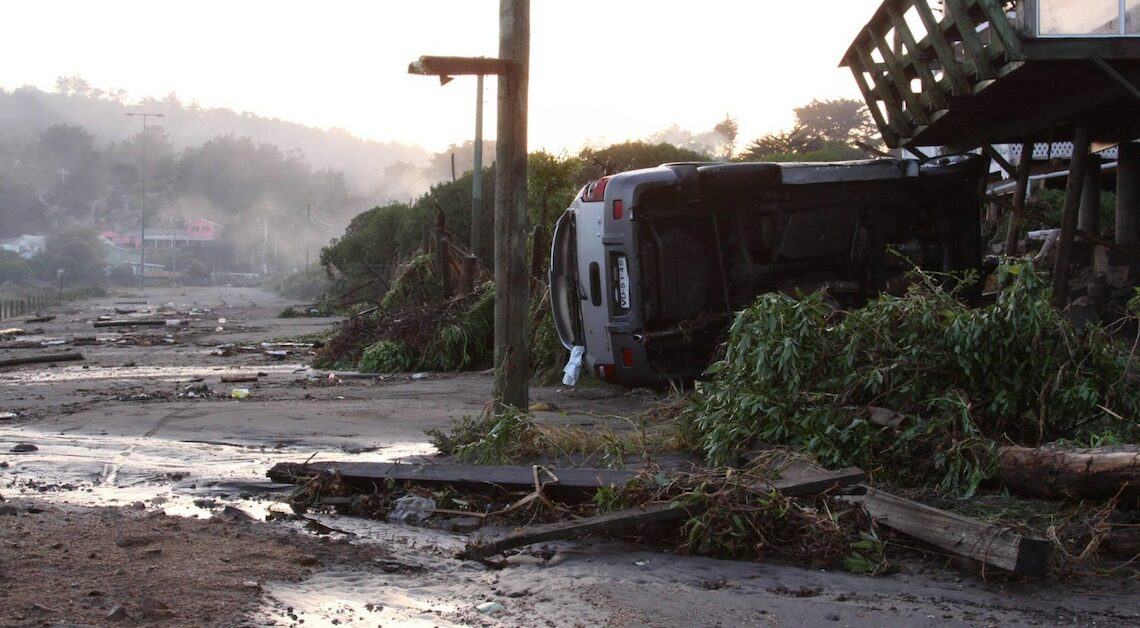
Earthquakes are natural events that can have immense destructive power and the consequences extend far beyond the obvious.
Understanding the effects of earthquakes: Richter scale and magnitude
The Richter scale is the best-known instrument for measuring the strength of an earthquake in order to better assess possible consequences. It indicates the so-called magnitude, i.e. the energy released in the earthquake. Each level on this logarithmic scale means a tenfold increase in the energy released. An earthquake of magnitude 4.0 is therefore ten times as strong as one of magnitude 3.0. The consequences of an earthquake depend crucially on its magnitude, but also on the depth of the hypocenter, the point below the earth's surface where the earthquake occurs.
- Magnitude 2.0 by 3.9: Such light earthquakes are often barely noticed and usually do not cause any damage. However, they are very common and can occur as foreshocks.
- Magnitude 4.0 by 4.9: These earthquakes are stronger and are often felt by people. Buildings can suffer minor damage, especially if they are not built to withstand earthquakes.
- Size 5.0 by 5.9: Earthquakes in this range are more significant and can cause significant damage, especially in densely populated areas. A well-known example of such an earthquake is the quake in Newcastle, Australia in 1989, which caused millions of dollars in damage despite “only” having a magnitude of 5.6.
- Size 6.0 by 6.9: These earthquakes can cause massive destruction, especially when they occur close to the Earth's surface. One example is the earthquake in L'Aquila, Italy in 2009, which killed over 300 people and caused numerous buildings to collapse.
- Magnitude 7.0 and higher: Such earthquakes are catastrophic. The earthquake in Haiti in 2010 with a magnitude of 7.0 resulted in over 200,000 deaths and a devastating humanitarian crisis. A magnitude of 8.0 or higher is referred to as a “major earthquake”. One such example is the earthquake in Chile in 1960, which with a magnitude of 9.5 was the strongest earthquake ever recorded.
Tsunamis: The silent danger after the earthquake
Earthquakes that occur beneath the sea floor can trigger tsunamis, which are often more devastating than the earthquake itself. A tsunami occurs when the earthquake suddenly displaces large masses of water, creating huge waves that move toward coastal regions at high speed.
- Origin: When the hypocenter of an earthquake is under the ocean, the shifting of the Earth's plates causes the water above to suddenly rise or fall. This movement releases energy that spreads out in all directions as waves.
- Speed and destructive power: Tsunami waves can race across the ocean at speeds of up to 800 km/h. They slow down on the coast, causing the wave height to increase dramatically. An initially barely perceptible wave on the open sea can grow into a destructive tidal wave on the coast. A tragic example is the 2004 Indian Ocean tsunami, which was triggered by a magnitude 9.1 earthquake and claimed the lives of over 230,000 people.
- Early warning systems: Despite this danger, there are early warning systems that use sensors on the seabed and on buoys to detect tsunamis. However, these systems are only as effective as the time between the earthquake and the waves hitting the coast. In some cases, there are only a few minutes to evacuate.
